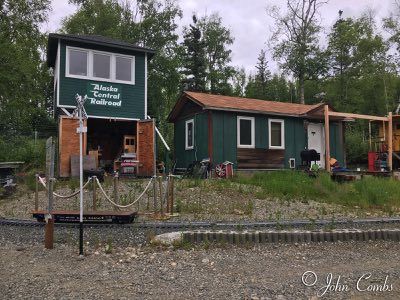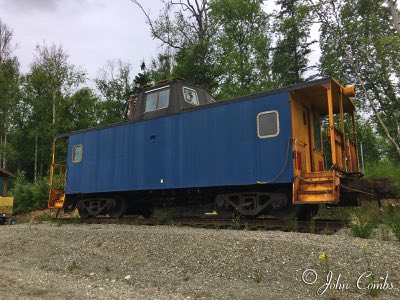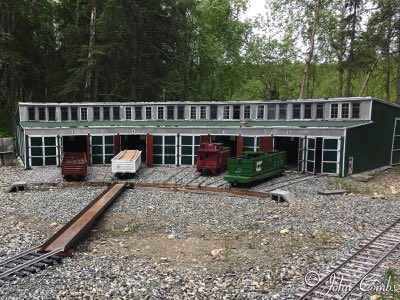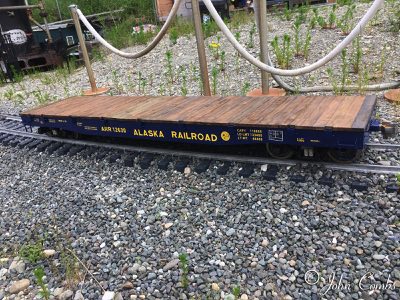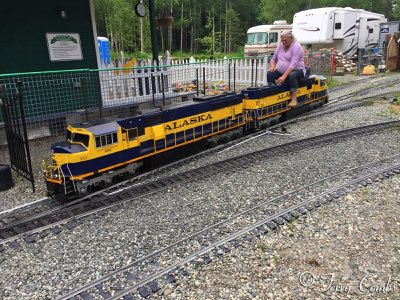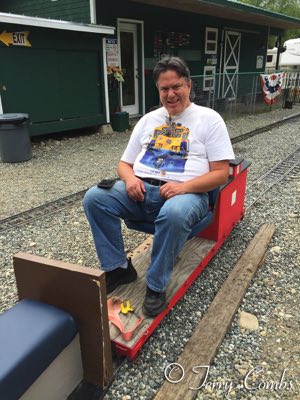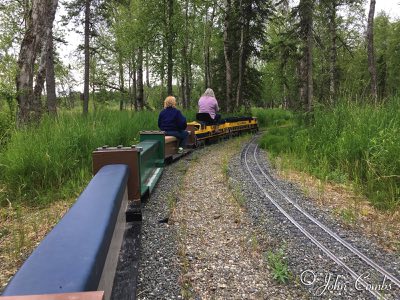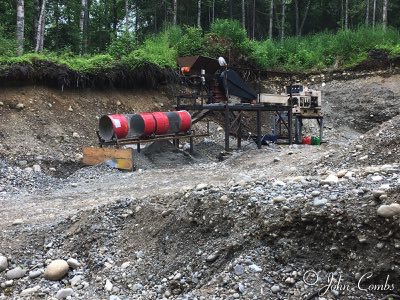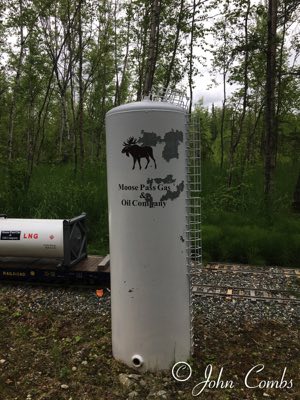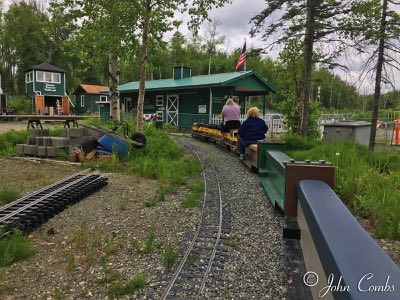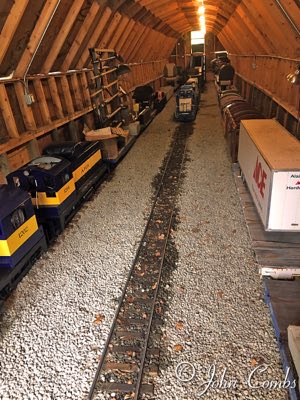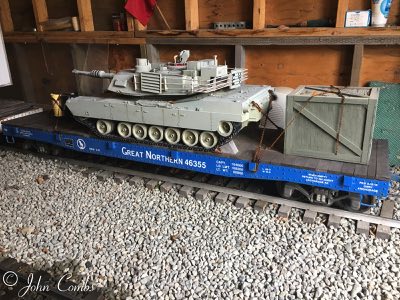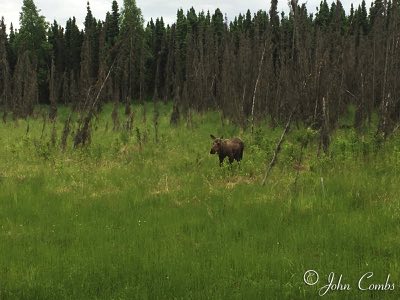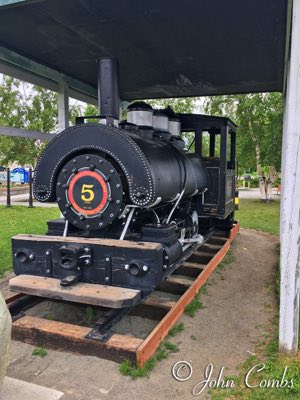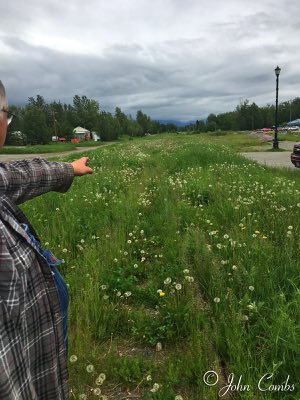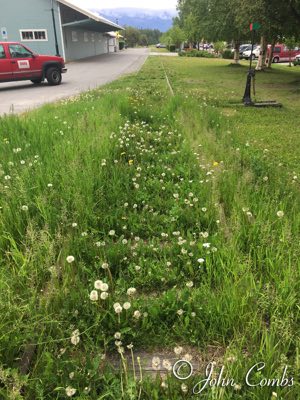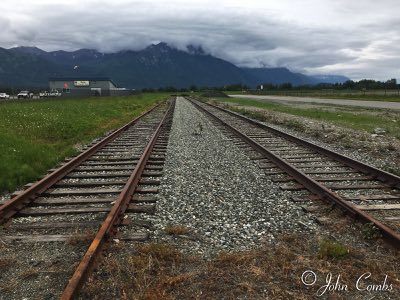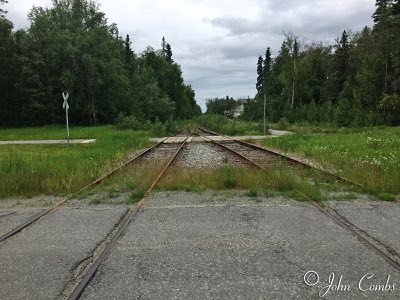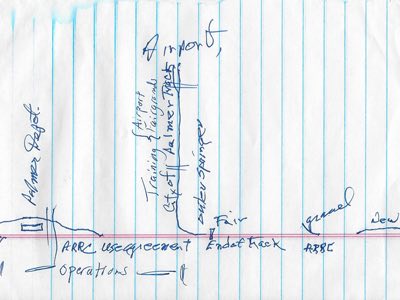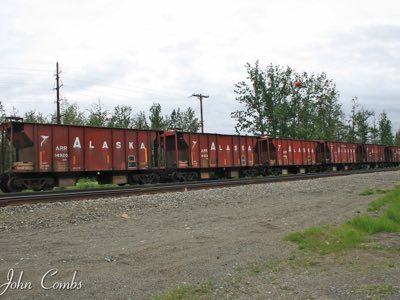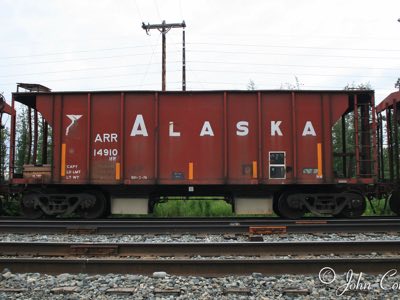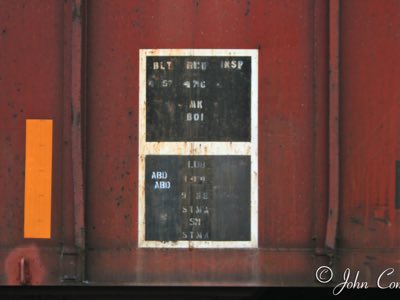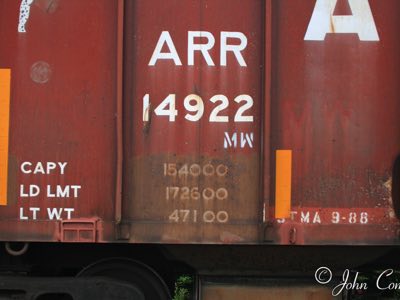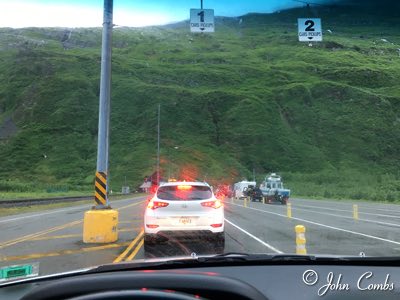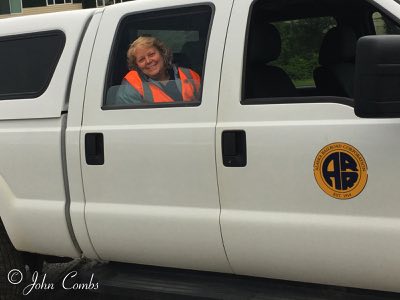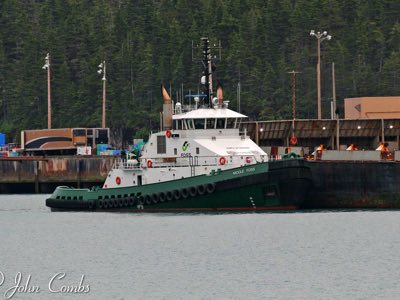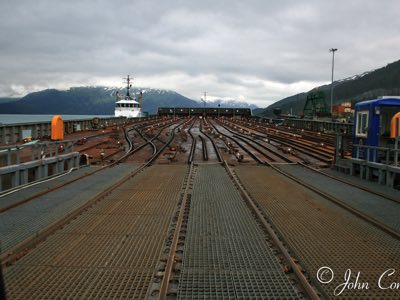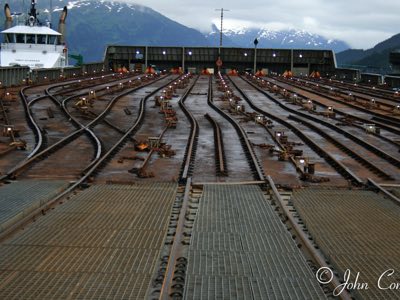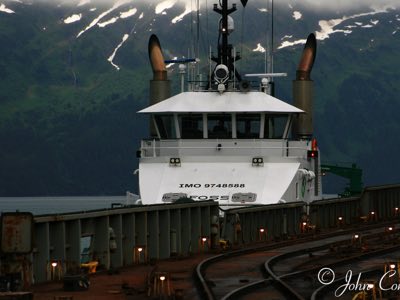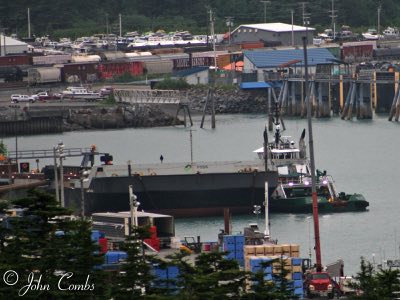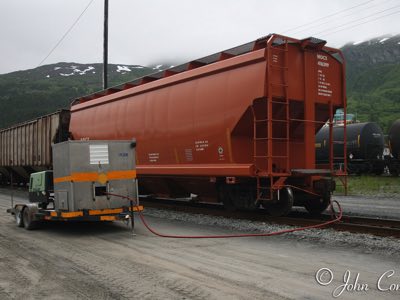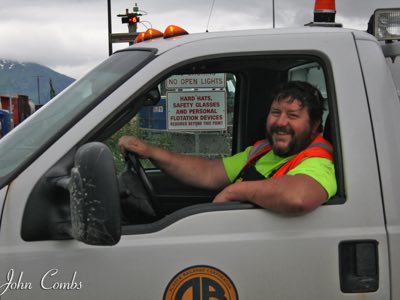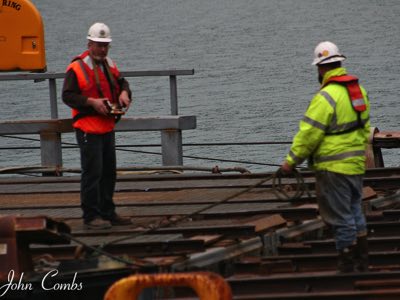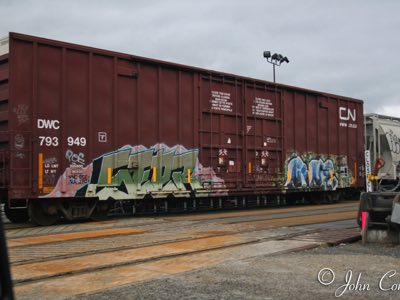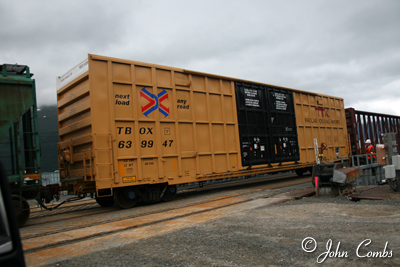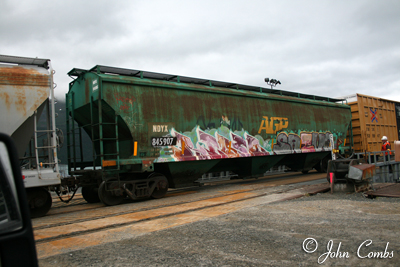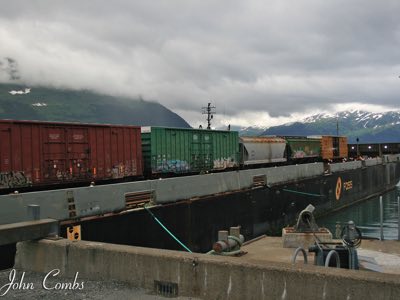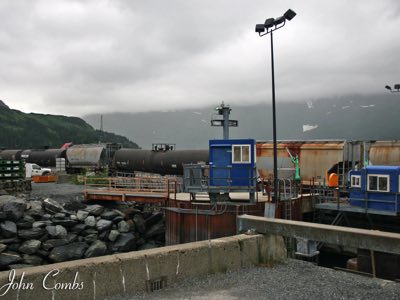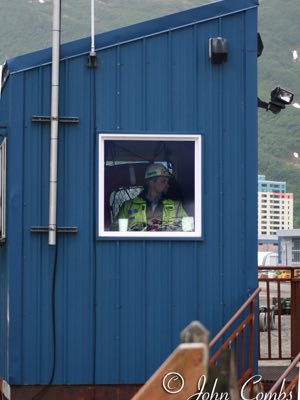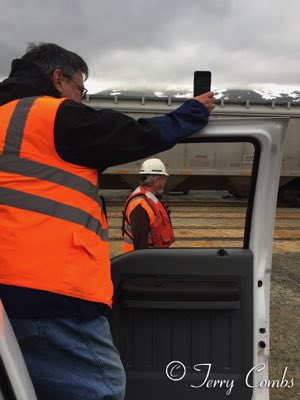Tuesday, June 25, 2018
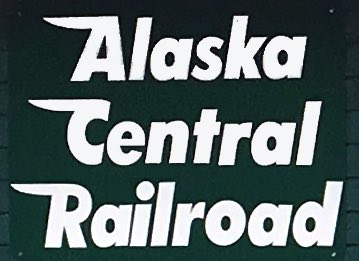 Live steamers are everywhere. From Colorado to Indiana to the Golden Gate to Long Island to Alaska and everywhere in between. Even though we've visited The Alaska Live Steamer's Alaska Central Railroad in Wasilla many times before, it's always worth another visit (or two or three). They are always working on something new such as tracks, bridges, tunnels and scenery. Although modeling a railroad in your basement or bedroom is great, it doesn't compare to the coolness of being able to step into one and ride through.
Live steamers are everywhere. From Colorado to Indiana to the Golden Gate to Long Island to Alaska and everywhere in between. Even though we've visited The Alaska Live Steamer's Alaska Central Railroad in Wasilla many times before, it's always worth another visit (or two or three). They are always working on something new such as tracks, bridges, tunnels and scenery. Although modeling a railroad in your basement or bedroom is great, it doesn't compare to the coolness of being able to step into one and ride through.
The non-profit organization, run by volunteers, occupies a 20-acre space off W. Riley Avenue with a 30-year lease. It boasts 2 miles of track, bridges, lakes, streams and a 90-foot tunnel. Phase three will expand construction into ten untouched acres. Equally exciting is member John Whitney purchased a former Alaska Railroad caboose and had it delivered to the complex. These busy beavers also added a roundhouse which was relocated from the former site.
Caretaker Victoria (Vicki) Greaens met us as our car pulled into the depot. Vicki serves as chief safety officer, secretary, equipment operator, conductor, engineer and dispatcher. That's a lot of hats to wear! Vicki fired up the twin 16-HP SD70MACs and beckoned us to hop aboard. With a slow tug we got underway. I loved the slow gentle pace of the 1/8 scale train as it glided along the track through the birch and evergreens. Little structures, miniature Alaska features and many amusing creations were scattered all along the line and the halfway point was marked by a 10-foot wooden Howe truss bridge crossing a little creek.
As Vicki pulled up to the 90-foot tunnel she remarked passenger cars are stored in it during winter time. She hooked them up to our train enabling us to pass through. She stopped the train briefly at a large contraption and proudly explained they use it to make their own gravel/ballast from rocks found underground. Further down the line Vicki put pointed fingers up on either side of her head signifying she'd spotted a moose. I raised my camera to grab a photo, but the little guy darted into the brush before I could snap it off.
The two-mile excursion took us about 30 minutes. After getting off our train Vicki took us through their storage building to view a wide assortment of locomotives and freight cars. I asked about the RDC and she said it was currently undergoing a rebuild. As far as future projects go Vicki says one day the switches will be electric instead of hand throw as well as getting a newly obtained West Coast steam winch operational.
Photos are fun, but the best way to get a feel for the Alaska Central Railroad excursion is with these skillfully shot (well I tried my best) videos:
- The rumble of a pair of SD70MACs
- Evans DF, Godzilla and Moose Pass Gas
- Black Lagoon, creeks and bridges
- Thomas, Havemeister Dairy and Village of Frenda
- The 90-foot tunnel
If you haven't been to the Alaska Central Railroad then you must absolutely put it on your "to do" list. My friend Matt Leistico did the ride and was amazed saying, "$10 for 45 minute ride :-)". Terry and I had a great time as well and want to give a shout out of thanks to Vicki and Jack for a very nice tour. We made a donation to the Alaska Central and encourage others to do so as well.
Wise time management is important for me while in Alaska as I try to pack in as many things as possible. After punching out of the ACRR we quickly headed to the Palmer depot to meet up with Patrick Durand for a tour of the future stomping grounds for steam locomotive #557.
Patrick explained bringing #557 up to Positive Train Control (PTC) standards is a very expensive endeavor. However, the Palmer Branch is currently unused by the Alaska Railroad and therefore does not require PTC implementation. Therefore, it is the perfect area to host shake down tests as well as eventually operate to the airport and fairgrounds (1.5 miles).
Patrick explained the Palmer Depot will host operations of Engine 557. The 557 Restoration Company has a use agreement with the Alaska Railroad Corporation for use of this track in downtown Palmer for future development. The last train over this track was in 1987, and it will require an estimated $300,000.00 to $500,000,00 just to bring it up to operational standards for 557. There are 11 grade crossing in 6 miles each of which will need to be brought up to standard operation. A tent will be erected for 557 at the Palmer Airport. Patrick believes #557 will be up and running with passengers by 2021. Without a doubt, when #557 becomes operational it will be a jewel in the crown of Alaska tourism. Mark my words, it will appear in literature of all the major tour companies operating in the state and will become a significant tourism draw. Mark. My. Words.
I just had to cram one more thing into an already busy day. Although I've seen the loading of many a barge I've never encountered the Canadian National AquaTrain. But first let me back up a step and explain what it takes to bring products to the great state of Alaska. Let's say you live in Anchorage and you want some orange juice for breakfast. Orange trees don't grow in Alaska so you'll have to bring your OJ up from California then to Prince Rupert, B.C. via freight car. Since there isn't a rail connection between the lower 48 states and Alaska your freight car will be loaded on Canadian National's AquaTrain.
As per their website, "Following the shortest water route to Alaska, the AquaTrain is a unique rail-marine barge that provides a vital link between Alaska and the rest of North America. CN’s AquaTrain operates year round and provides fast 5-day service from Prince Rupert, BC to Whittier as well as daily service from Whittier to Anchorage and Fairbanks, Alaska." All this so you can drink your eye-opening glass of go-go juice!
Hoping back into our Honda Pilot Terry and I began the long drive from Wasilla to Whittier to catch the AquaTrain. We needed to make good time so we wouldn't miss the opening of the Whittier tunnel in time to see the loading of the barge. The tunnel traffic goes to Whittier on the half hour and we made the gate with about ten minutes to spare! After purchasing our round trip ticket we eased into one of the lanes to wait for the signal to go. We took the opportunity to prepare ourselves for barge loading by putting on our steel toed boots and high visibility vests plus grab our hard hats and safety glasses.
The Anton Anderson Memorial tunnel is the longest combined vehicle-railroad tunnel in North America covering a distance of 2.6 miles. Vehicles travel through the tunnel at 25 miles per hour while remaining 35 feet apart. Click here to see a very well done YouTube video of traveling through the Whittier tunnel.
We met our escort at the barge loading entry gate and were given a safety briefing on the way to the dock. The Alaska Railroad takes safety very seriously and our escort decided to park their truck in a location which would provide us with maximum protection. As long as we didn't stray more than a foot or two from the truck we could shoot photos and video to our hearts content
Our escort pointed out the barge measured 400 feet long, 8 tracks wide and offered a capacity of 45 rail cars. It is the longest rail car barge servicing the great state of Alaska and transports about 1,575 rail cars each year.
The barge was towed into Whittier by the Nicole Foss, originally built as the Nicole Kathleen in 2017 by the Foss Maritime Shipyard of Rainier, Oregon. Powered by two eight cylinder, Caterpillar C280-8 MC diesel engines it has a rated 7,268 horsepower each powered into independently steerable rudders.
To prepare for barge unloading, steel cables are connected from winches stationed on the dock to the barge. Winches are then used to pull the cables left or right until the rails on the barge are aligned with those on the dock. Once this occurs, a temporary connection is put in place. Now railcar freight can be unloaded. Today GP40 #3007 would serve as the yard goat. In front of #3007 were several flat cars known as idler flats. What is an idler flat? I'm glad you asked. The joint between the barge and the dock is very weak. In order to avoid losing freight or locomotives, old flat cars are used to serve as a connector between the two. Flat cars work best for the task since they are lightweight and do not block visibility.
The arrival of the barge was 1:10 PM and a 34 railcar manifest was off loaded. Terry and I missed the unloading, but were still in time to see it being loaded with 44 empty rail cars. Track loading order was 3, 2 and then 1 (curved track at far left). Our escort also took us up Shotgun Cove Road so we could get an elevated view of the operation. Once the barge was fully loaded it would leave at midnight for Prince Rupert.
Here is a good summary provided by an Alaska Railroad employee:
"A typical AquaTrain - 3 person crew on duty in Anchorage to bring a 125 south to Whittier. 3 hour-ish ride. Arrive in Whittier and yard train. Pull cars off barge in 2 cuts usually place in mountain track and bay track to work and air test. Crew then shoved empty cars on the barge. After barge is loaded the crew then doubles train together and departs Whittier on the 50 or 20 tunnel. Then arriving in Anchorage to end their shift. We try and complete this in a 12 shift for 1 crew start "
How about some videos of the loading process:
- Back loading freight cars
- Loading hoppers
- Ted Woodward gives us an overview
- Problem Railbox relocated to track five
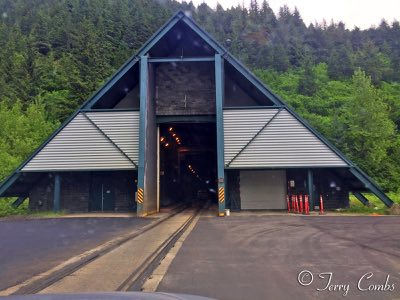 |
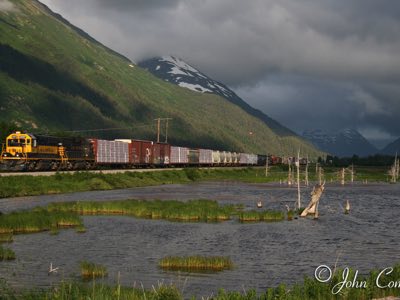 |
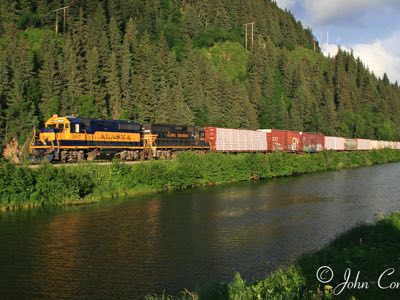 |
| Waiting for passage out of Whittier | 125N at Portage | 125N at Portage |
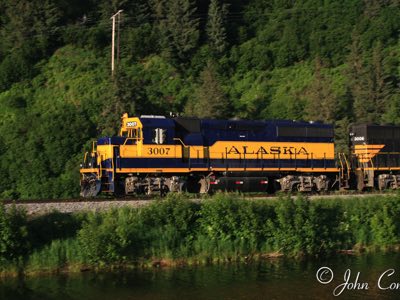 |
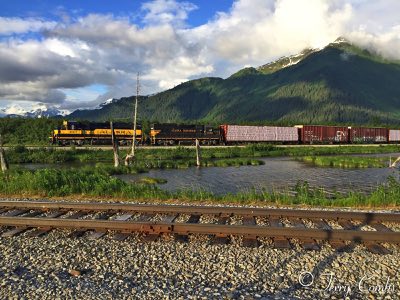 |
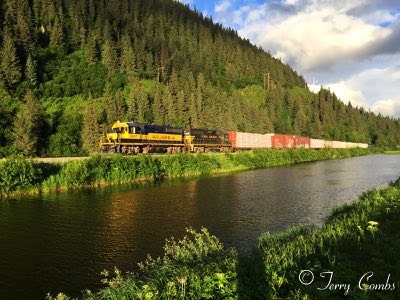 |
| 125N at Portage | 125N at Portage | 125N at Portage |
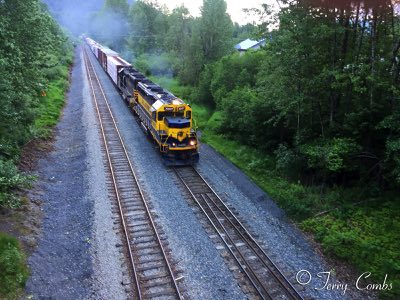 |
||
| 125N at Girdwood |
Decisions, decisions, decisions! Should we stay and see the rest of the barge loading or chase 125N (unloaded barge freight) to Anchorage. Ted Woodward made the exciting suggestion of the later and we were soon on our way through the tunnel. Robert Krol met us on the other side and joined in the chase. High water foiled our attempts to get photos at the second tunnel so we decided to try our luck at Portage.
Dismal overcast weather met us at the wye at Portage, but in a rare stroke of luck for me the sun poked its head through the clouds at the last minute which yielded some decent photos and video (by the way, it is very difficult to take photos and video at the same time without use of a tripod). Parting ways with Robert we headed to the overpass a Girdwood. Terry took some great photos while I shot some absolutely drop dead awesome video of the train passing directly beneath me. The air rushing out in front of the train felt like it was about to knock me over! What a rush!
- 125N freight at Portage
- Matching speed with 125N along Turnagain Arm
- 125N passing directly under us at Girdwood (turn your speakers up loud!)
On our drive to the Rudd's home we had a wonderful view of Mount Susitna (Sleeping Lady). Exhausted, but excited by the days events, we collapsed at 11:30 PM. The perpetual Alaska summer daylight propelled us through the remnants of our 16 hour day.
